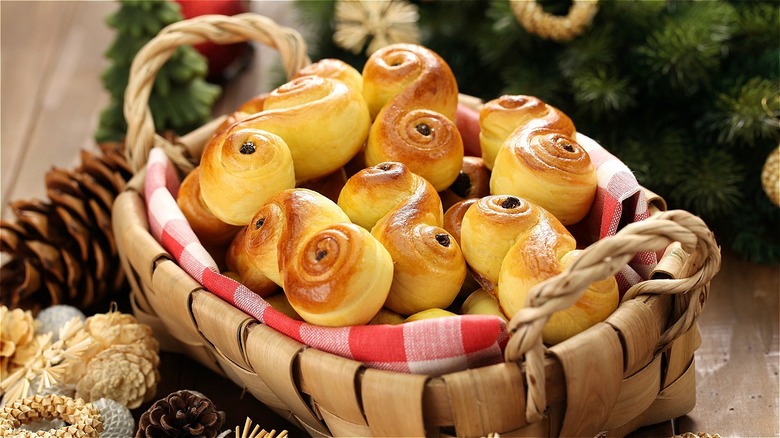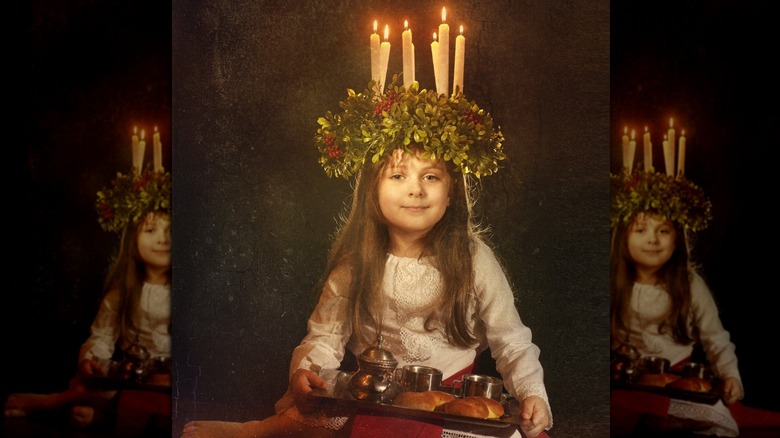These Cat Tail-Shaped Buns Are A Swedish Holiday Tradition
While Christmas in Sweden is celebrated with a festive Julbord — and no, IKEA's version doesn't quite cut it — the holiday season really kicks off with St. Lucia Day, a midwinter festival of lights held on the 13thof December. Which, yes, is over a week before the actual longest night of the year, so the traditional Lucia carol about a quasi-mythical figure who comes bringing light into every house seems a bit premature.
As Real Scandinavia explains, though, December 13 actually was the date of the winter solstice according to the old Julian calendar, so today's Swedes still celebrate the return of the light even before the darkest days are upon us. (The connection to St. Lucia herself is a bit more tenuous, as she was actually from Sicily and most likely never set foot in Scandinavia in midwinter or any other time of year.)
At one point, this holiday was celebrated by the disturbing custom of having a daughter of the house serve breakfast to the family while wearing a crown of flaming candles on her head. While the Lucia crown itself is still worn by the oldest girl in a family, Real Scandinavia offers the reassuring information that today's candles are electric ones. The traditional breakfast remains the same, though: coffee, glögg, gingerbread cookies, and special buns baked just for the holiday called lussekatter.
These sweet Christmas treats have a scary backstory
While Swedes enjoy sweet yeast buns year-round, Real Scandinavia says that saffron-flavored ones are typically served during the Christmas season. For St. Lucia Day, the buns get shaped into swirls meant to resemble either a curled-up sleeping cat or cat's tail. The name lussekatter translates to "Lucia's cats," but as to why these buns are associated with the saint — well, the story isn't nearly as sweet nor as charming as you might expect.
The blog SemiSwede identifies a curious folktale that may have something to do with how lussekatter became associated with the holiday. Long ago in northern Sweden, legend had it that Lucia was the first wife of Adam (Eve being wife #2). She was ... well, not so nice. In fact, she seems to have been a female counterpart of the similarly-named Lucifer, and the two became parents to a race of demons. Lucia was also said to recruit from the ranks of local children on the night before Christmas, so parents were urged to keep their kids safe indoors. The connection to cats (and sweet buns) is unclear, but lussekatter were originally called "djävulskatter," meaning "the devil's cats." Yikes! Then again, the winter holidays have long had their creepy side. Though we may not know whether the buns are meant to commemorate a saint or a sinner, they're still delicious and go great with a glass of breakfast glögg!

